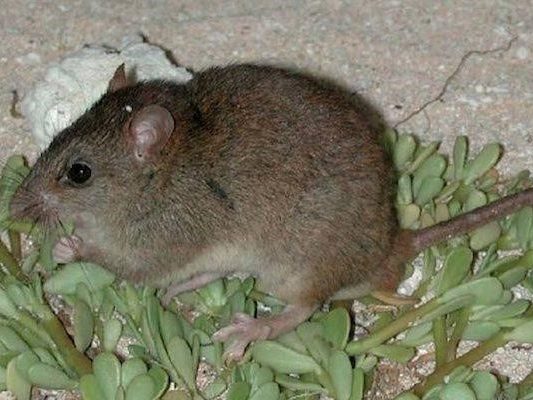The Bramble Cay Melomys: First Mammal to Become Extinct Due to Climate Change
Photo by the Government of Queensland, Australia, Department of Environment and Heritage Protection
Jenny Yeoh-Wang|July 7, 2016
Human-induced climate change has claimed its first mammalian species: the Bramble Cay melomys. This rodent was the only mammal native to the Great Barrier reef (1) and was first detected on Bramble Cay in 1845 by European sailors (2).
In the late 1970s, the Bramble Cay melomys population was estimated to number several hundred, but by 2002, their population had already begun to decline (2). In 2011 and early 2014, researchers found no evidence of the Bramble Cay melomys. Although their surveys were brief and hampered by efforts to avoid nesting turtles, the researchers knew that the Bramble Cay melomys were endangered.
The researchers launched an “emergency response” including plans to conduct more stringent methods of surveying the Bramble Cay melomys population and to create a captive breeding program at the University of Queensland (2). It took five months to obtain permission to conduct the captive breeding program, a costly and time-consuming endeavor. Unfortunately, their efforts were too late: in the more extensive August-September 2014 expedition, the researchers did not detect any Bramble Cay melomys based on 1,170 small mammal and camera traps and searches throughout the small cay (2).
The extinction of the Bramble Cay melomys was due to climate change, which escalated erosion from the wind and ocean, shrinking the area of Bramble Cay above high tide from approximately 4 hectares in 1998 to 2.5 hectares in 2014 (2). This erosion, coupled with higher tides and repeated storm surges induced by climate change, resulted in a 97% reduction of vegetation on which the Bramble Cay melomys relied for food and shelter and increased competition for habitat with other species (1, 2).
Bramble Cay’s seabirds and turtles remain at risk, as do the coral in the rest of the Great Barrier Reef. Large portions of the Great Barrier Reef have undergone bleaching and death due to warmer seawater. While it is too late to save the Bramble Cay melomys, their extinction demonstrates the need for rapid aid to endangered species (3). Ian Gynther, the leader of the August-September 2014 expedition who concluded that the Bramble Cay melomys are extinct, recommends assisted migration of species that face habitat loss and scarcer resources (3). In addition, conservationists should be vocal about the causes of climate change, including the burning of fossil fuels (3). Unless humans can stem the tide of global warming, we can expect more casualties due to climate change in the future (1, 3).
References:
- Innis, M. (2016, June 14). Australian Rodent Is First Mammal Made Extinct by Human-Driven Climate Change, Scientists Say. The New York Times. Retrieved from http://www.nytimes.com/2016/06/15/world/australia/climate-change-bramble-cay-rodent.html
- Gynther, I., Waller, N. & Leung, L.K.-P. (2016) Confirmation of the extinction of the Bramble Cay melomys Melomys rubicola on Bramble Cay, Torres Strait: results and conclusions from a comprehensive survey in August–September 2014. Unpublished report to the Department of Environment and Heritage Protection, Queensland Government, Brisbane. Retrieved from https://www.ehp.qld.gov.au/wildlife/threatened-species/documents/bramble-cay-melomys-survey-report.pdf
- Hance, J. (2016, June 29). ‘Devastated’: scientists too late to captive breed mammal lost to climate change. The Guardian. Retrieved from https://www.theguardian.com/environment/radical-conservation/2016/jun/29/bramble-cay-melomys-australia-extinction-climate-change-great-barrier-reef

